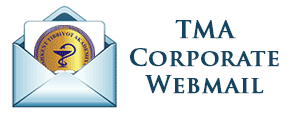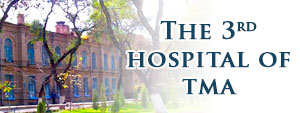1. Doris Karnevali model consists of what inner resources?
A strong resistance, making impressions *
B. exciting experience, knowledge *
C. Marden, exchange *
D. Experience, master *
E. accommodate exchange
F. Economic Resources
G.,
H. texnalogiya and transport
2. Doris Karnevali model of human organization established what resources?
A. Venue exchange *
B. Economic Resources *
D. texnalogiya and transport *
E. Strong resistance, making impressions
F. exciting experience, knowledge
G. chivalry exchange
H. Experience class
3. Now the main task of the work of nurses?
A. Only a specialist acting mulojalarni tayorlabgina Kolma *
B. Independent burns in the diagnosis of disease symptoms, especially nurses *
C. determining the patient maintains his problems *
D. Patients feel javobagrlikni *
E. Only carry out the work of nurses for acting muloja
F. independent diagnosis of Nursing burns errors
G. patient is not defined through dialogue with the tax problems
H. Patients would not be able to feel javobagrlikni
4. The main goals of care?
A. Human what is necessary for its normal condition of the country and how it should be on how to help certain *
B. The patients involved in the installation of an effective dialogue and cooperation facilities *
C. patient care and assistance *
D. patient come from the new problems of any kind *
E. Patients with no need for any country identifies
F. to attract people with the installation of an effective dialogue and cooperation
G. shows respect for patient
H. patient come from new diseases of any kind
5. violation of medical consumption are as following example of anger?
A. respiratory *
B. catering *
C. drinking, cleanliness *
D. Koç, the movement *
E. Listening to music
F. cleanliness instructions
G. drinking, smoking
Patients with H. Koch, movement
6. lung abscess phlegm has the following layers:
A. All the answers are correct*
B. 1-layer foam
C. 2-layer purulent
D. 3-layer comWhichses microcells
E. 1-foam layer, two-layer suppurative
7. In the development of asthma attacks play a role following exogenous factors:
A. dishormonal changes
B. menopause
C. microbial antigens with pneumonia
D. climatic conditions*
E. allergic foods
8. The main clinical signs of respiratory diseases:
A. cough
B. shortness of breath
C. All the answers are correct*
D. sputum
E. Temperature
9. Clinical survey conducted in diseases of the respiratory system:
A. gastroduodenoscopy
B. Laboratory*
C. Colonoscopy
D. EhoEG
E. EGDFS
10. Complications of respiratory diseases:
A. abscess and gangrene of the lungs*
B. Stroke
C. heart defects
D. gastritis
E. cholecystitis
11. Causes of mitral regurgitation:
A. gastritis
B. Colitis
C. rheumatism*
D. enteritis
E. tonsillitis
12. Methods of clinical examination of heart and blood vessels:
A. ECG, Doppler*
B. gastropically
C. bronhografichesky
D. colonoscopy
E. fibrosopichesky
13. Rheumatic fever – is:
A. disease where inflammation occurs
B. connective tissue disease
C. All the answers are correct*
D. infectious disease
E. allergic disease
14. Specify the cardiovascular system:
A. heart defects
B. atherosclerosis
C. Hypertension
D. All of the answers are correct *
E. CHD
15. coronary artery disease include:
A. Angina
B. myocardial infarction
C. All the answers are correct*
D. heart failure
E. unstable angina
16. Types of angina:
A. angina
B. unstable angina
C. All the answers are correct*
D. progressive angina
E. persestiruschaya angina
17. Types of breathlessness:
A. inspiratory
B. expiratory
C. Mixed
D. All of the answers are correct*
E. inspiratory-expiratory
18. I Hypertension Stage:
A. hypertrophy of the left ventricle
B. functional changes*
C. functionally stukturnye violation
D. slow development
E. sponttannoe development
19. The most frequent clinical forms of rheumatism:
A. Oral
B. eye
C. articular*
D. ear
E. Gout
20. Differences of angina from myocardial infarction:
A. runs hard
B. Do not relieved by nitroglycerin
C. ECG nabldayutsya permanent changes
D. docked erinita
E. stoped nitroglycerin*
21. The outbreak of acute myocardial infarction observed the following changes:
A. aneurysm
B. perforation
C. necrotic myocardial damage around the hearth*
D. malignancy
E. perforation
22. Atypical forms of myocardial infarction include:
A. All the answers are correct*
B. asthma attack
C. abdominal
D. arrhythmic
E. gastralgicheskaya
23.Vidy unstable angina:
A. It is easily
B. Whichntsmetalla*
C. acquired
D. Heavy
E. light
24. The increased blood pressure results:
A. Raising the tone of blood vessels*
B. rise in temperature
C. decrease in vascular tone
D. Bleeding
E. Strengthening of vascular tone
25. Types of myocardial infarction:
A. melkoochagovyj
B. macrofocal
C. All the answers are correct*
D. transmural
E. macrofocal and melkoochagovyj
26. Forms of rheumatism:
A. Active
B. All the answers are correct*
C. inactive
D. recurrent rheumatic heart disease
E. progressive rheumatic disease
27. The period 1 in the pathogenesis of allergic asthma:
A. pathoWhatical
B. pathophysiological
C. immunological*
D. Function
E. astomoidny status
28. Stages of lung abscess:
A. infiltration, abscess breakthrough in the bronchus*
B. suction bleeding
C. dyspnea, hemoptysis
D. All of the answers are correct
E. Stage red hepatization
29. Points auscultation of the heart:
A. Field of the aortic valve
B. Areas pulmonary valve
C. Areas bases xiphisternum
D. All of the answers are correct*
E. Botkin-Erb point
30. Stages of asthma:
A. re-emerged
B. Late
C. All the answers are correct
D. rannaya
E. predastmy*








